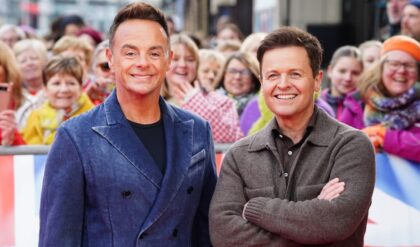
If I told you that there’s an epic sci-fi fantasy film you’ve probably never heard of that has a bigger budget than A New Hope (by a significant margin), and one that’s comparable to the respective budgets of The Empire Strikes Back and Return of the Jedi, you wouldn’t believe me. But that’s exactly what you get with 1983’s $30 million now-cult classic but mostly forgotten Krull. While this Peter Yates film was clearly an ambitious project, it’s simply missing the “X” factor that George Lucas and company had already discovered and distributed to the masses with great success.
But still, it’s such an over-the-top fantastical adventure that it’s worth checking out.
Comparison Is The Thief Of Joy

For context, A New Hope has a reported production budget of $11 million, while Empire Strikes Back cost about $30 million, with Return of the Jedi being the most expensive of the original trilogy, topping out with a $42 million budget.
What sets Krull apart from the original Star Wars trilogy, however, is that against its $30 million budget, it only earned back $16.9 million at the box office, while Star Wars went on to become a billion dollar franchise.
One thing I truly admire about Krull is that although it was a complete swing and a miss on the commercial success front, as well as the critical front, there is some seriously fantastical cinematography that would give George Lucas a run for his money if only the screenplay wasn’t so terrible.
Our Hero’s Journey

Speaking of Krull’s screenplay, I’m not exactly sure what I watched to be entirely honest, so I’ll offer a quick rundown so we can get into why this cinematic disaster was so ridiculously expensive.
Krull’s hero and primary protagonist is Colwyn (Ken Marshall), a young prince who’s set to marry Princess Lyssa (Lysette Anthony) for reasons both romantic and logistical. By joining forces and uniting their respective kingdoms, they can use their collective powers to take out the film’s primary antagonist, the Beast. However, the Beast sends his army of Slayers, who resemble Medieval stormtroopers (blasters and all), to kidnap Princess Lyssa, and kill Colwyn’s father before they could finish the ceremony.
The Beast And His Black Fortress

Devastated by what he thinks is the end of his kingdom, Colwyn seeks help from Ynyr (Freddie Jones), an elder with an infinite amount of wisdom about a number of very important prophecies that make absolutely no sense. Colwyn learns about the Glaive, which looks like a five-pointed fidget spinner with retractable blades, how the “chosen one” is the only person who could safely procure the Glaive, and how he’s, in fact, the chosen one in the worldbuilding that Krull establishes.
Seeking revenge against the Beast, there is one more complication: his magical lair, the Black Fortress, disappears every day, only to reappear in a completely different location the following sunrise.
Colwyn’s adventure is eventually joined by a magician named Ergo “the Magnificent” (David Battley), a cyclops who’s aware of his own approaching mortality named Rell (Bernard Bresslaw), and a band of nine thieves and thugs with names like Torquil, Bardolph, Menno, Darro, and Keegan (portrayed by a young Liam Neeson).
With one common goal in mind, the Krull crew embarks on a treacherous quest to rescue Lyssa, and destroy the Beast’s army, restoring peace.
Is This The Only Way To Make Quicksand?

While Krull may sound like your basic sci-fantasy plot, its cinematography is larger than life, which is made obvious by the film’s egregious production value. Not only were 23 massive set pieces built for the production, but constant script rewrites required the set designers to alter the sets to match the new story lines on several occasions.
Though I can’t wrap my head around why the quicksand scenes, which take up maybe five minutes of screen time, required four tons of shaved cork to pull off while being filmed at Pinewood’s 007 Stage (one of the largest sound stages in the world), I admire Yate’s gumption if that’s what he truly believed this movie needed.
Whoops, We Forgot About The Glaive!

Couple Kroll’s set design with the fact that the film’s score was composed by James Horner and performed in its entirety by the London Symphony Orchestra, it’s no wonder the production dollars started racking up, and I haven’t even had time to mention the lair of the Crystal Spider, and the monolithic amount of special effects that were required to make those third-act sequences jump off the screen.
That said, some of the establishing and wide tracking shots are so awe-inspiring, I’m willing to forget that Colwyn doesn’t even know how to use the Glaive, or even attempt to try until the last 10 minutes of the film.


